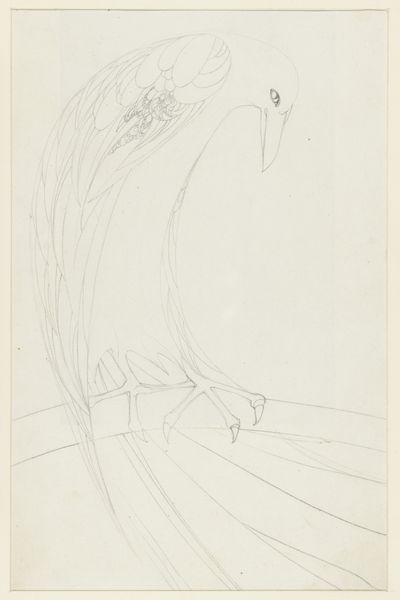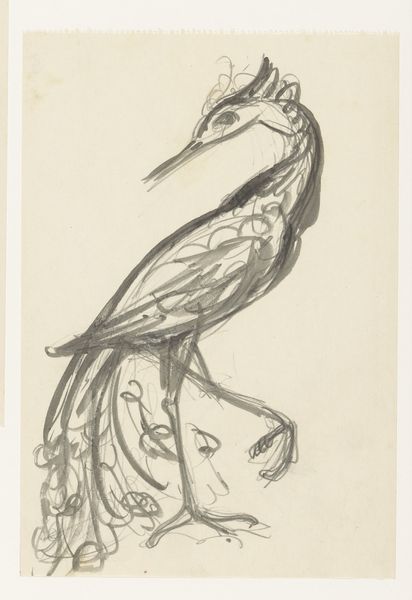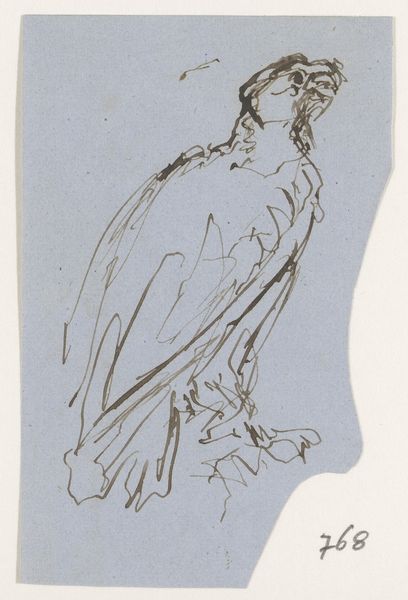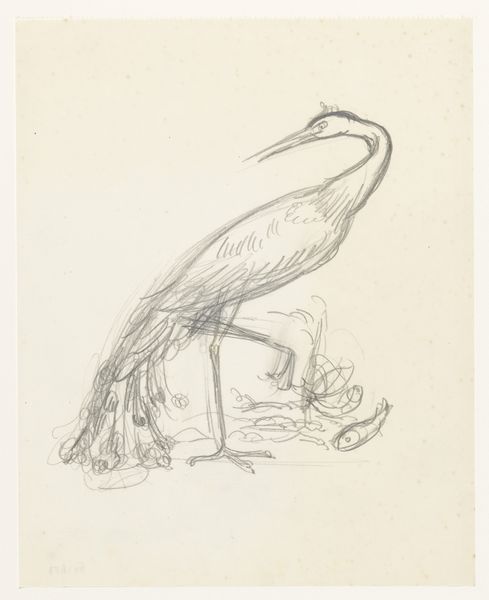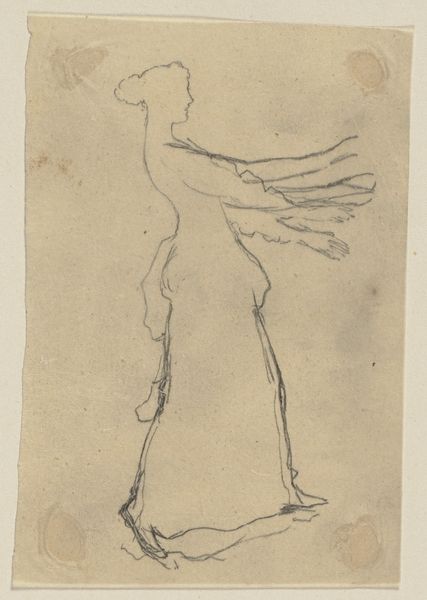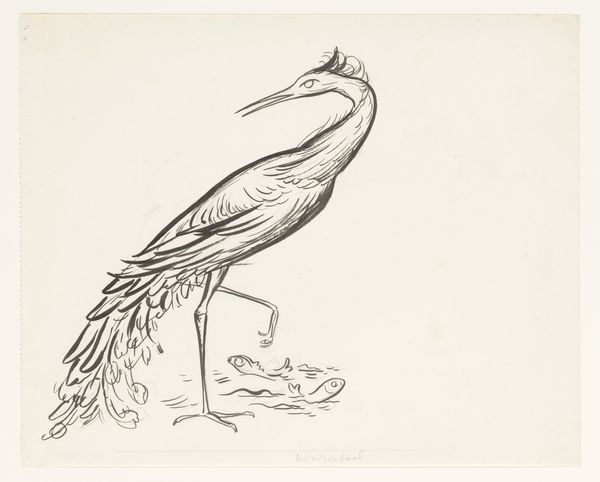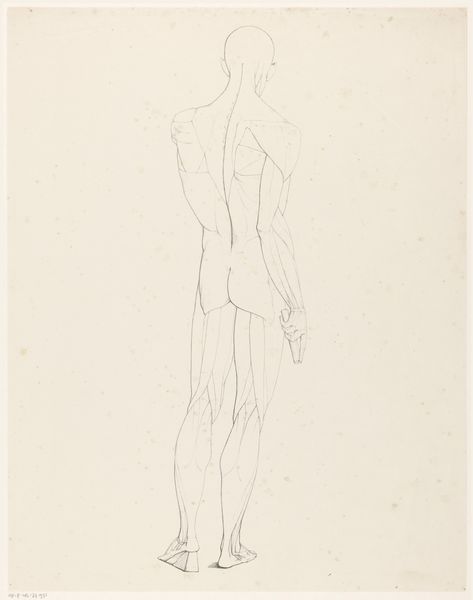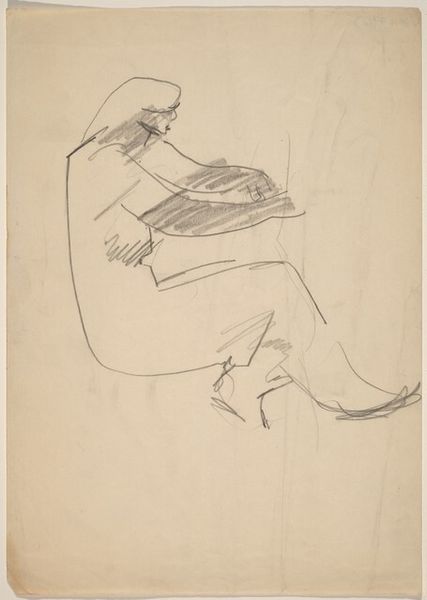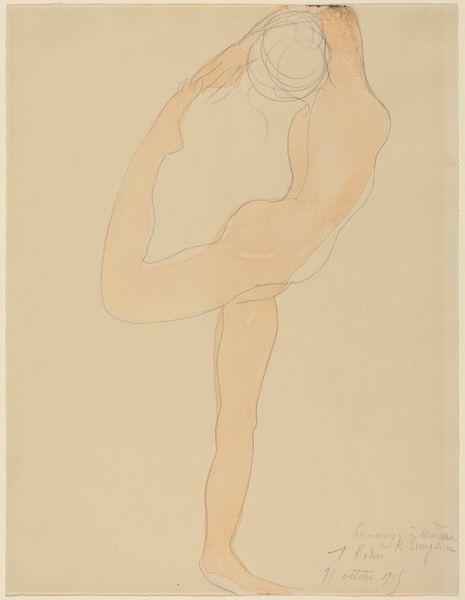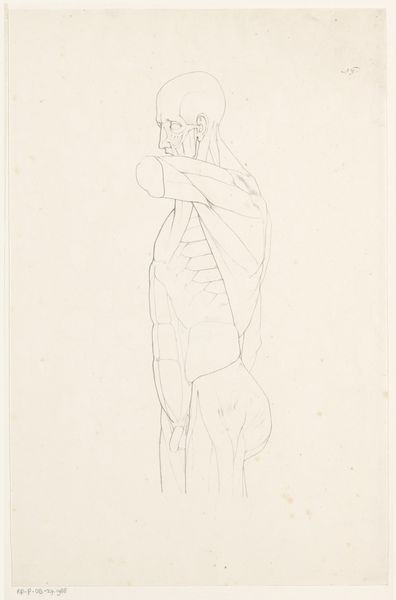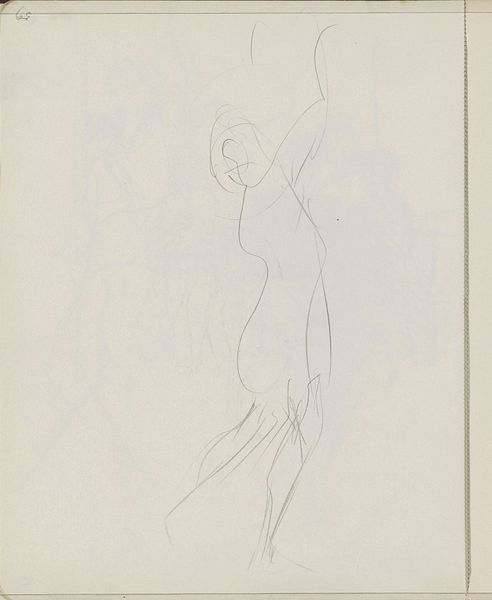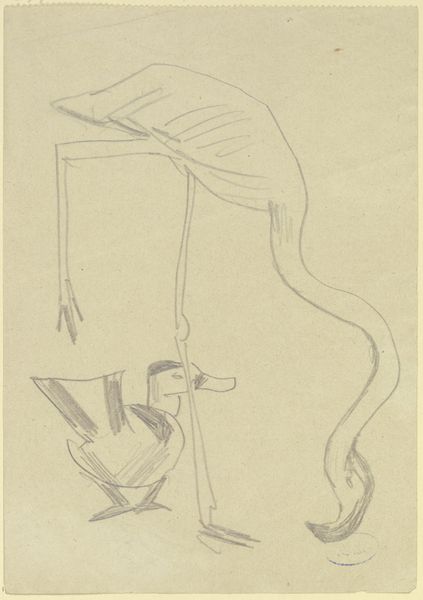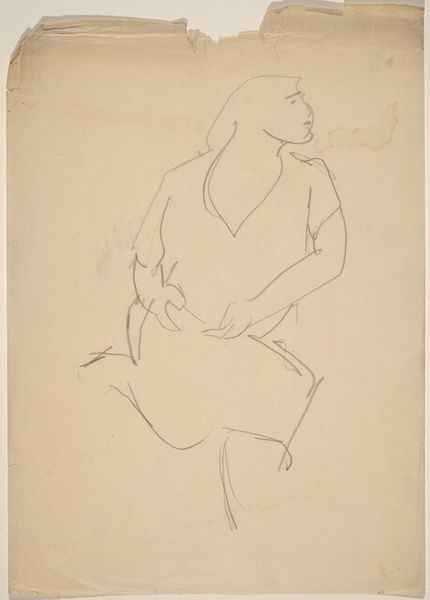
Dimensions: support: 387 x 254 mm
Copyright: CC-BY-NC-ND 4.0 DEED, Photo: Tate
Curator: Henri Gaudier-Brzeska's drawing, "Vulture II", uses minimal lines to convey a powerful presence. I find it incredibly stark. Editor: Indeed. Consider the vulture as a potent symbol throughout history and across cultures. It often embodies death and decay but also renewal and cleansing. Curator: Absolutely. Gaudier-Brzeska was deeply influenced by early modernist primitivism. Here, the vulture becomes a raw, almost totemic figure, stripped of sentimentality. Editor: Its gaze is almost confrontational. Given Gaudier-Brzeska's tragic early death in World War I, it's hard not to see this drawing as a meditation on mortality. Curator: Or maybe it's a challenge to conventional artistic representations and societal norms. The vulture exists outside of the beautiful and pleasant, forcing us to consider uncomfortable truths. Editor: A poignant reminder of art's role in confronting the less palatable aspects of human existence. Curator: Ultimately, this work makes me consider the function of the figure of the vulture as both an omen and an agent of change.
Comments
tate 8 months ago
⋮
http://www.tate.org.uk/art/artworks/gaudier-brzeska-vulture-ii-n04531
Join the conversation
Join millions of artists and users on Artera today and experience the ultimate creative platform.
tate 8 months ago
⋮
For Gaudier-Brzeska, animals provided as much fascination as people. He produced an extraordinary number of animal drawings, studying their movement and behaviour in much the same way as he approached his human subjects. As well as observing birds and deer in the park, Gaudier-Brzeska regularly visited London Zoo, sketching the animals so quickly that the ink was often still wet as he turned the page. These drawings manage to capture the anatomy and personality of each animal with only a few simple lines. Gallery label, September 2024
